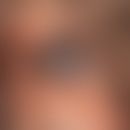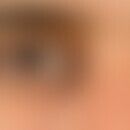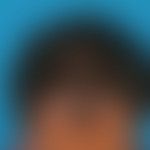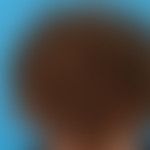Synonym(s)
HistoryThis section has been translated automatically.
DefinitionThis section has been translated automatically.
Rare hair anomaly characterized by so-called furrow h airs, non-syndromal harmless, only cosmetically disturbing. Uncombed hair syndrome (UHS), also known as "pili trianguli et canaliculi" or "cheveux incoiffables" occurs in children and improves with age. UHS is characterized by dry, frizzy, shaggy and often blond hair that cannot be combed smooth. To date, both non-hereditary and familial cases of UHS have been described, with both autosomal dominant and recessive inheritance.
You might also be interested in
EtiopathogenesisThis section has been translated automatically.
Mutations in the following genes have been detected (Basmanav FB et al. 2016):
- PADI3 (peptidylarginine deiminase 3)
- TGM3 (transglutaminase 3)
- TCHH (trichohyalin)
The two enzymes PADI3 and TGM3 are responsible for post-translational protein modifications. Their target structural protein TCHH (trichohyalin) is involved in hair shaft formation.
ManifestationThis section has been translated automatically.
ClinicThis section has been translated automatically.
Hair that is rough to the touch, dry, frizzy, hard, sticks out disorderly from the scalp and therefore cannot be styled, usually light-colored, silvery shimmering hair. Brushing and combing are impossible. Eyebrows, eyelashes and body hair are normal. The hair appears shimmering in the light and is reminiscent of Pili torti or Pili pseudoanulati.
DiagnosisThis section has been translated automatically.
In light microscopy, the cross-section of the hair shaft is rather triangular or kidney-shaped (normal: round or oval). The hair shaft anomaly is best shown by means of the so-called shrink tube technique.
Differential diagnosisThis section has been translated automatically.
TherapyThis section has been translated automatically.
Progression/forecastThis section has been translated automatically.
LiteratureThis section has been translated automatically.
- Basmanav FB et al (2016) Mutations in Three Genes Encoding Proteins Involved in Hair Shaft Formation Cause Uncombable Hair Syndrome. Am J Hum Genet 99:1292-1304.
- Brown-Falco O et al (1982) On the syndrome: uncombable hair. Dermatologist 3: 366-372
- Dupré A, Rochiccioli P, Bonafé JL (1973) "Cheveux incoiffables": anomalie congenitale des cheveux. Bull Soc Franc Dermatol Syph 80: 111-112
- Dupre A, Bonafe JL (1978) A new type of pilar dysplasia. The incompatible hair syndrome with pili trianguli et canaliculi. Arch Dermatol Res 261: 217-218
- Hicks J, Metry DW, Barrish J, Levy M (2001) Uncombable hair (cheveux incoiffables, pili trianguli et canaliculi) syndrome: brief review and role of scanning electron microscopy in diagnosis. Ultrastruct Pathol 25: 99-103
- Ludwig E (1987) Pili canaliculi, a type of uncombed hair. Dermatologist 38: 727-732
Incoming links (16)
Cheveux incoiffables; Curly hair acquired; Curly hair nevus; epidermal transglutaminase; Furrow hairs; Glass wool hair; Hair shaft anomalies (overview); Hair, syndrome of the uncombinable; Hair, uncombed; Heat shrink technology; ... Show allOutgoing links (9)
Anhidrotic ectodermal dysplasia; Ectodermal dysplasia, hidrotic, autosomal dominant; Furrow hairs; Heat shrink technology; Hypotrichosis congenita hereditaria marie unna; Menkes syndrome; Monilethrix; Pili torti; TCHH gene;Disclaimer
Please ask your physician for a reliable diagnosis. This website is only meant as a reference.







